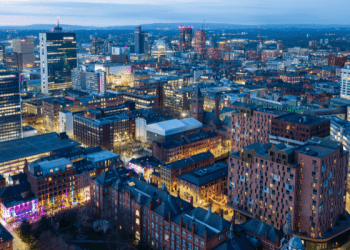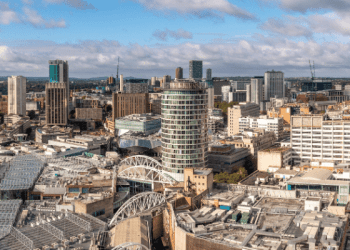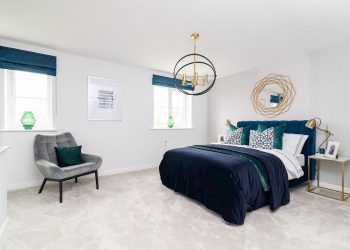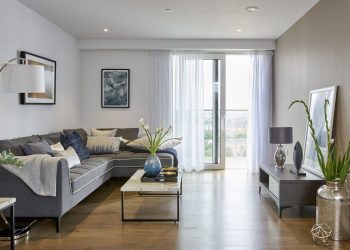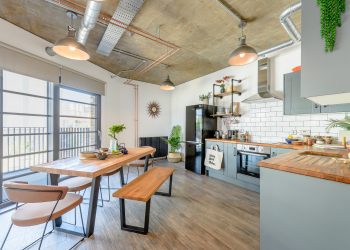Period homes are as popular as ever with buyers and renters in the UK. However, the differences between eras can be subtle, so it’s not always easy to place a property within a certain age. If you own a historic home or are on the hunt for one, then it’s important to know the difference. We take a look at the most common eras for British period homes – Georgian, Victorian and Edwardian – and help you tell which is which.
FAQs
How do I know if my house is a period home?
You can tell if your house is a period home by a number of distinguishing features. Period homes belong to specific types of architectural style that come from different parts of UK history. Generally, if your home was not designed and built within the past 100 years, it may be classed as a period home.
What is a period home?
A period property is one that was built in a certain historical time period, which gives it a distinctive architectural style. While there isn’t a set range of time periods allowed under this definition, it’s generally understood to mean Georgian, Victorian and Edwardian.

Is your property Georgian?
If your home was built between 1714 and 1837, then it’s Georgian. Like all the stylistic periods, Georgian homes take their name from the monarchs of the day. Helpfully, the kings of this time were all called George (from George I to George IV), which must have saved a lot of time and effort when bringing in new stamps, coinage and popular songs!
Inspired by the scale and grandeur of classical Roman and Grecian architecture, Georgian period homes are big, airy and impressive to look at. Designers of the time wanted occupants to feel freed from the typically darkened and cramped proportions of previous eras. This is why Georgian homes tend to have large rooms with high ceilings and plenty of natural light.

Noticeably, the top storeys of Georgian houses are markedly smaller and darker than those rooms below. This is because it was usual for the owner and family to have their rooms on the first and second floors, while their staff lived in the smaller rooms above.
As you might expect from a 100-year-long architectural movement, there are a lot of tangible differences between early and late Georgian homes. The early 1700s offer a simpler style, focusing on getting room dimensions perfectly balanced by using mathematical ratios dating back to Ancient Rome and Greece. As the century progresses, the style becomes gradually more ornate, leading to the much more decorative and sometimes extravagant influences of the Regency Era of 1811-1820.
In terms of period-specific decoration, Georgian homes routinely feature stucco-fronted exteriors. The term stucco is of German origin. It describes the use of spraying plaster over the rough exterior surface of walls to make it look like stone. Georgian homes use finer plaster mixes of gypsum and pulverised marble to make moulds for different types of decorative features.
What are the typical features of a Georgian home?
- Grand, symmetrical room proportions
- High ceilings with lots of natural light (typically for 1st and 2nd floors)
- Smaller top-storey rooms traditionally used as staff accommodation
- Stucco-fronted exteriors
- Prominent use of white or cream colours
What is the difference between Georgian and Colonial?
‘Colonial’ architecture is the architectural style favoured in the buildings of its colonies. Specifically, you will see Colonial Georgian architecture in the buildings of the country’s former colonies, such as the former American colonies and Canada.
Is your property Victorian?
If your home was built during the reign of Queen Victoria I (1837-1901) then it can be called a Victorian-period property. Unlike previous architectural eras, the Victorian style is highly eclectic and draws on a wide range of inspirational sources. Georgian architects drew on the classical influences of Ancient Greece and Rome, alongside Asian, Middle Eastern and colonial elements.
This new and often surprising style of building and decorating homes is representative of a time of significant change. The British Empire’s expansion brought in new ways of thinking as well as massive sources of new wealth. This led to both the landed gentry and newly wealthy city merchants experimenting with new ways of beautifying their homes.

As well as the grand houses of the nation’s elite, the Victorian style stamped its mark on middle-and-lower-income housing too. Terraced housing, though present in English cities before this period, was much more common during the Industrial Revolution. The subsequent population boom meant affordable homes were needed quickly and in large quantities.
While many Victorian homes lose a little of the ‘roominess’ of the previous Georgian style, they still tend to feature high ceilings to make rooms feel bigger than they were – and to impress guests! Beautifully decorative plasterwork is a common hallmark for the period, with striking emblematic patterns and ceiling roses being much in demand.
Another iconic part of Victorian interior design is the use of ornate lighting. You will no doubt have seen plenty of examples of this style in homes across the UK, from crystal chandeliers to wall-bracketed lamps and other low-level lighting features.
Of course, we can’t forget to mention the all-important fireplace. When you think of Victorian-period living rooms, a cosy fire burning in the grate almost immediately springs to mind. Original Victorian fireplaces have such a unique charm that property developers routinely keep or restore them to their full glory whenever possible.
What are the typical features of a Victorian home?
- High ceilings with detailed plasterwork
- Ornate, low-intensity lighting features
- Colourful brickwork – bright blues, reds and yellows often feature
- Stained glasswork in doorways
- Decorative floor tiling
- Bay windows
- Open fireplace – often with decorative tiling arching over the grate.
What age is a Victorian house?
Victorian houses were built between the years of 1837-1901 – the time of the reign of Queen Victoria. However, some experts also include architecture from the Edwardian period (see below) under the ‘Victorian’ classification.
Is your property Edwardian?
If your home was built in the Edwardian era of 1901-1910, then it is an Edwardian-period property. Though this was a short period, it was still an important one. Throughout the reign of Edward VII, we can see a general clearing away of some of the fussiness and clutter of the Victorian age, leading to lighter, brighter and more clear-cut designs.
Simple, practical architecture and interior design methods were the order of the day during this period. The result is a blend of some traditional design elements with more modern approaches that provide a breath of fresh air. This concept extended beyond the house too, as Edwardian homes typically featured gardens (front as well as back) in response to the growing desire for access to green open spaces at home.

While the red brickwork, bay windows and mock-Tudor cladding are still around in Edwardian design, it aims to offer larger, brighter rooms and a more open feel. Edwardian houses are also extremely well made, thanks to the advances in planning and construction methods emerging at the time. For today’s owners, this represents savings in maintenance costs as well as added peace of mind.
The concepts behind the Edwardian style were so popular that they are thought to have outlasted the king’s reign. Many consider the architectural era to have lasted until 1920, a full 10 years after Edward VII’s death.
What are the typical features of an Edwardian home?
- Wider range of housing types than previous eras
- Wide, leafy gardens, often with a front garden
- Red brickwork
- Mock-Tudor cladding
- Extended chimney stacks
- Solidly built with high-quality construction materials
- Large, light and airy rooms
- Large hallways
Are Edwardian houses well built?
Yes, Edwardian homes have a reputation for being extremely well built. In general, high-quality building materials were used during this period and homes lasted well. However, Edwardian homes will still require particular care, as with all period homes.
Are period homes worth more?
Period homes are neither inherently more nor less valuable than modern properties. Even though modern homes tend to command a higher asking price than period homes, the long-term value of period property is well recognised across the UK. However, modern homes generally come with fewer maintenance complications, greater heat and water efficiency, and are easier to renovate.

The real attraction of the period home, whether it is Georgian, Victorian or Edwardian, is its bespoke features and pleasing aesthetic. People from all walks of life fall in love with the design ideals of a specific era when house hunting. If that appeal is strong enough, they are often willing to pay a premium to secure it.
So, while fashions in architecture and interior design change frequently, period homes give a sense of stability. Their classic kind of beauty is easily recognisable and can often be very valuable to the right buyer.
Do period homes have more problems?
Period homes have both advantages and disadvantages compared to modern homes. On the plus side, period homes were invariably built to last. Their construction materials are high-quality and durable. Structurally, they may be more resilient than modern builds.
On the down side, period homes are often less energy efficient than homes built to modern standards. Consequently, they may be more expensive to heat.
Do buyers still want period homes in 2024?
Lots of buyers want period homes in 2024 for the same reasons that they are always popular. Period homes are characterful, charming, historic and durable. They are likely to retain their value since their historic appeal is almost always a positive feature in any market.
What other kinds of period homes are there in the UK?
Besides Georgian, Victorian or Edwardian homes, the UK also has homes belonging to the following periods:
Interwar Period (1918-1939) – This covers the period between the end of World War One and the beginning of World Ward Two. This era saw the introduction of affordable council housing, but also the rise of large semi-detached houses with bay-fronted windows, upstairs bathrooms, large kitchens and gardens. Art Deco houses also became increasingly popular during this period. These homes featured bold new designs that welcomed in sunlight while experimenting with new materials like concrete and steel.
Rise of Terraced Housing (1970s) – By the late 1950s, Britain wanted change, and homes were a prime outlet for people to express their individualism. Interiors became more of a focus than exteriors, so even a buyer on a tight budget could buy one of the increasingly popular terraced houses and still display their tastes inside with contemporary furnishings and modern conveniences. Central heating systems were also becoming the norm, replacing chimneys in many cases.
New Builds (1990s) – In the hectic, money-fuelled madness of the 1990s, many people wanted a return to more traditional and reliable housing features. They wanted their new build houses to have an air of elegance like older buildings. Mock-timber framing, rendered walls and cottage features, these styles all became popular to buyers once again. New builds also focused heavily on comfort and convenience inside the home; they became better insulated, with double-glazing being widely introduced, and safer thanks to improved fire and gas safety regulatory standards.
Read more
Period homes, walking into Britain’s past
In an age when practicality and cost tend to influence home design more than anything else, period homes have stood the test of time. They are pillars of British architectural history and give our towns, cities and countryside that added sense of old-world elegance and grandeur. Still much in demand, the Georgian, Victorian and Edwardian styles continue to fascinate and delight house hunters of every demographic.
Our guides answer all your questions on buying, selling, renting and renovating. From Grade 2 listed homes, to London apartments, we’ve got you covered.
HomeViews is the only independent review platform for residential developments in the UK. Prospective buyers and tenants use it to make an informed decision on where to live based on insights from carefully verified resident reviews. Part of Rightmove since February 2024, we’re working with developers, house builders, operators, housing associations and the Government to give residents a voice, recognise high performers and to help improve standards across the industry.























